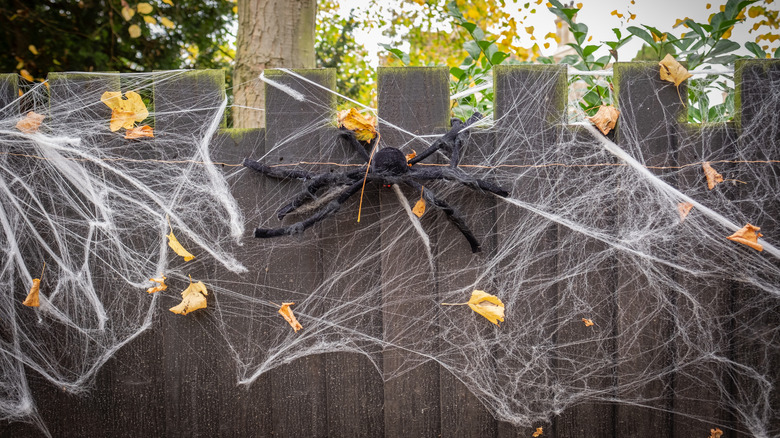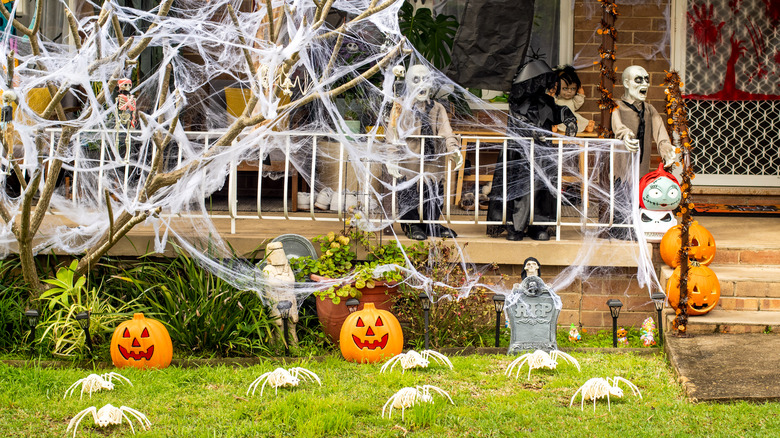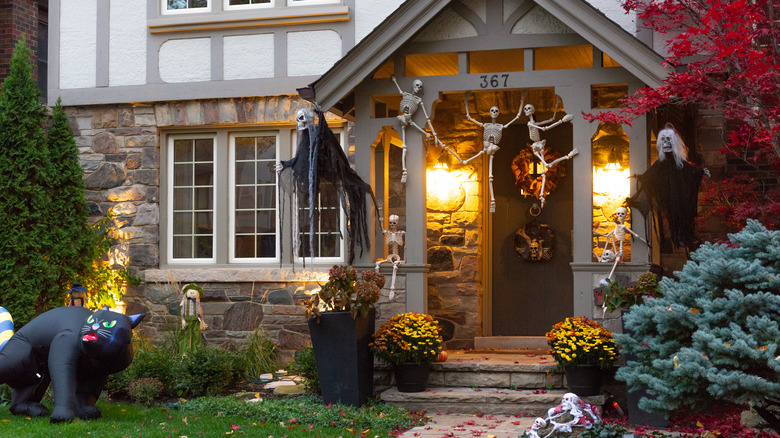The Dangers Of Using Fake Cobwebs As Halloween Decor
As soon as the weather starts to crisp up in the mornings, pumpkins magically begin to crop up on doorsteps and front porches alike. Decorating for Halloween is an exciting and thrilling experience. The autumn air sets the perfect mood for transforming your home into a spooky and enchanting space. From hanging eerie cobwebs to placing glowing jack-o'-lanterns, every decoration adds a touch of mystery and anticipation. The process of selecting costumes, carving pumpkins, and arranging spooky props brings out creativity and allows for the expression of love for all things Halloween. The excitement lies in the anticipation of creating a magical atmosphere that will delight both young and old, making Halloween a truly enchanting and memorable celebration.
One popular decoration that plagues the fronts of many houses across the neighborhood is fake cobwebs. Draped over shrubs, bushes, or even side doors, fake cobwebs serve as a backdrop for many spooky front yard scenes, often featuring a large hairy arachnid with enlarged limbs. While these can help homeowners realize their frightening fantasies, they also pose unanticipated dangers to wildlife, ecosystems, and even the structural integrity of your homes as well. So before you pop over to your local Party City or Home Depot in search of an oversized cobweb, you ought to think twice about the impact on the environment in which you live or be ready to embrace a trick rather than a treat.
How fake cobwebs impact wildlife
Fake cobwebs can have detrimental effects on the environment. These decorations, made of synthetic materials like polyester or nylon, pose risks to wildlife and local ecosystems. First, these fake cobwebs can pose a danger to wildlife, particularly birds and insects. Birds often use real cobwebs for nesting materials, but when they encounter artificial cobwebs, they may also incorporate them into their nests. These synthetic fibers can entangle birds, making it difficult to fly, feed, or care for their young. Authentic cobwebs are biodegradable, while artificial ones are not, posing a risk for sustainability. Moreover, insects may also become trapped in these fake cobwebs, disrupting the local food web as they serve as a critical food source for many other species.
Secondly, the artificial fibers used in these cobwebs can negatively impact local ecosystems. When exposed to the elements, these fibers can break down into microplastics over time, which can persist in the environment for years. These microplastics can infiltrate soil and waterways, causing contamination and harming aquatic life. Additionally, wind or storms can carry these fibers away, spreading them across the landscape and contributing to the growing global issue of plastic pollution. The ingestion of microplastics by animals further magnifies the problem as it can lead to bioaccumulation within the food chain, ultimately affecting larger species, including humans. Though it may seem like fake cobwebs are a seemingly harmless Halloween decoration, their environmental consequences are far from trivial.
How fake cobwebs pose a risk to your home
Using fake cobwebs as outdoor Halloween décor can also pose significant risks for your home. One major hazard stems from the fact that these cobwebs are typically made from highly flammable synthetic materials. When exposed to open flames, sparks, or even hot light bulbs used in decorations, these synthetic cobwebs can catch fire quickly. This is especially perilous during dry times of the year, such as late autumn when Halloween is celebrated, as the flammable nature of these decorations can lead to rapid and uncontrollable spreading of flames, posing a serious fire hazard for homeowners.
Beyond their flammability, fake cobwebs can also be harmful to homeowners. They can obstruct pathways and walkways, creating tripping hazards for trick-or-treaters and visitors. When used near electrical fixtures or outlets, they can increase the risk of electrical fires. Additionally, if not properly secured, these cobwebs can become entangled in outdoor equipment like lawnmowers or outdoor lighting, potentially causing damage or malfunctions. Furthermore, if left in place for an extended period, they may deteriorate and leave behind unsightly residues that can be difficult to remove from surfaces.
So, while fake cobwebs are a popular choice for outdoor Halloween decorations, homeowners should exercise caution due to their increased risk of danger for those living in the home and any of their guests. Prioritizing safety and responsible use of these decorations is essential to ensure a spooky but safe Halloween celebration.


